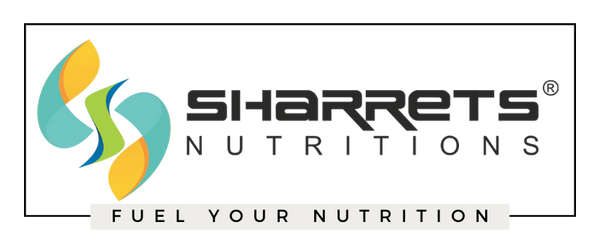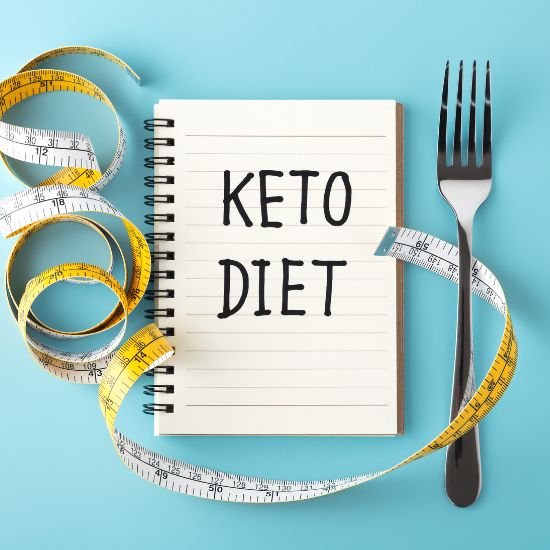
The Targeted Keto Diet: What Is It And Who Benefits?
Share
The principle behind this TKD ( Targeted Keto diet) diet is very similar to a CKD ( Cyclical Keto diet) , only you are going to consume carbs before and after your weight training. Learn what the Targeted Keto diet is and who can benefit from it .
PART 2

In part one of this article we looked at what the CKD (Cyclical keto diet) was and how it would apply to those individuals who exercised regularly.
A traditional ketogenic diet is based solely around the usage of protein & fat while keeping carbs intake to a bare minimum.
In a CKD (Cyclical Keto diet) though , you implement periods of higher carbs eating called refeeds, usually once / week, in an effort to supply your body with the muscle glycogen it needs in order to keep performing the higher intensity work you are asking from it.
This requires a carefully planned out depletion workout beforehand however and strict adherence to doing very low carbohydrate eating for the entire rest of the week.
Others may want to use some of the principles of the ketogenic diet in their own lives but do not want to completely cut out carbs every day. This is where the TKD or targeted keto diet comes in.
THE TARGETED KETO DIET
The principle behind Targeted Keto Diet or TKD is very similar to that of a Cyclic Keto diet (CKD) only you are going to consume carbohydrates right before and after your weight training workouts. This will give your body the energy it needs to lift with a higher volume and at a higher intensity level.
Athletes who are involved in high intensity sprinting exercises will also likely want to use a TKD approach as this type of exercise does require carbohydrates in the system beforehand if you hope to produce optimal results.
Sprinting on a low carbohydrate diet is generally not something most people should be doing, particularly if they are taking in a low number of calories on top of everything (people who are maintaining or trying to gain weight on a CKD may try sprinting, but it still isn't going to be as easy to do in comparison to someone who is consuming a standard, more moderate carbohydrate intake).

SETTING UP A TARGETED KETO DIET (TKD)
To set up a Targeted Keto diet or TKD , follow the same procedure in terms of protein intake as a Cyclical Keto Diet , allowing for 1 gm of protein / pound of body weight.
Then determine the number of calories of carbs you wish to consume before & after your workouts.
Generally an intake of 0.33 gms of carbohydrates / pound of body weight is recommended (so 40 to 80 gms for most people) for each meal however you may want to increase or decrease this depending on your particular goals (those who are trying to lose body fat may decrease while those who are trying to gain muscle may want to increase).
After you have figured out the contribution of your carbs calories to the diet, add this to the contribution of your protein calories (remember both carbs and fat supply 4 calories / gram) and then subtract this from your daily total calorie allotment.
The final number you get there will determine how many calories should come from fat so divide by Nine in order to get total number of grams.
This will allow you to eat some carbs on a daily basis so as to keep your body out of ketosis and supply more energy for your workouts. It is really up to you whether or not you want to eat the extra carbs on days you doesn’t workout, some people will choose to keep some carbs in on those days but decrease them slightly while others might choose to completely remove them.
Furthermore, if you are only doing a moderate intensity paced cardio sessions, it isn't likely that you need the carbs in your diet either so you can remove them from those days if you wish as well.
REFEED PERIODOn the refeed side of things, in a Cyclical Keto diet main purpose of the refeed period is as already stated, to restore muscle glycogen levels. When individuals on a Cyclic Keto diet do their refeeds, they are also by default eating many more calories on these days as well.
On a diet that does bring calories quite low, it is a good idea to do some type of refeed period of higher calorie eating in an effort to make sure your metabolism does not slow down too much and to give your body a break from the rigors of dieting.

Although , even on a Targeted Keto diet , if you’re still diet pretty tough (meaning with the additional carbohydrates you are still quite low calorie), adding in a couple of days of higher calorie eating is a sensible better plan.
You can add a great deal more carbs if you wish, or take a more balanced approach adding a combination of more fat and protein . Since you are eating carbs during the week you may not be quite as glycogen depleted as someone on a Cyclic keto diet therefore wouldn't need to 'carbohydrate load' in a sense as they do on a Cyclic Keto diet .
Definitely though, it would be a good idea to make sure a fair amount of this refeed does come from carbs as if you are exercising heavy you are still likely to be low on glycogen levels.
CONCLUSIONSo if you want to maintain a more rigorous exercise program, consider giving a TARGETED KETO DIET (TKD) a try. It works along some similar principles as a CYCLIC KETO DIET (CKD) , but also has some important alterations.
This diet would also be ideal for those who are looking to gain mass but want to maintain their blood sugar levels as the carbohydrates are placed into the diet at times when it is most likely that they will not get turned into body fat. The additional carbohydrates also make this diet a little more anabolic due to increased insulin levels which is another important thing you want whenever you are trying to gain muscle mass.
To rate this diet as far as fat loss is concerned, I would give it 3.5/5 and in terms of building lean muscle mass, 4/5.
















